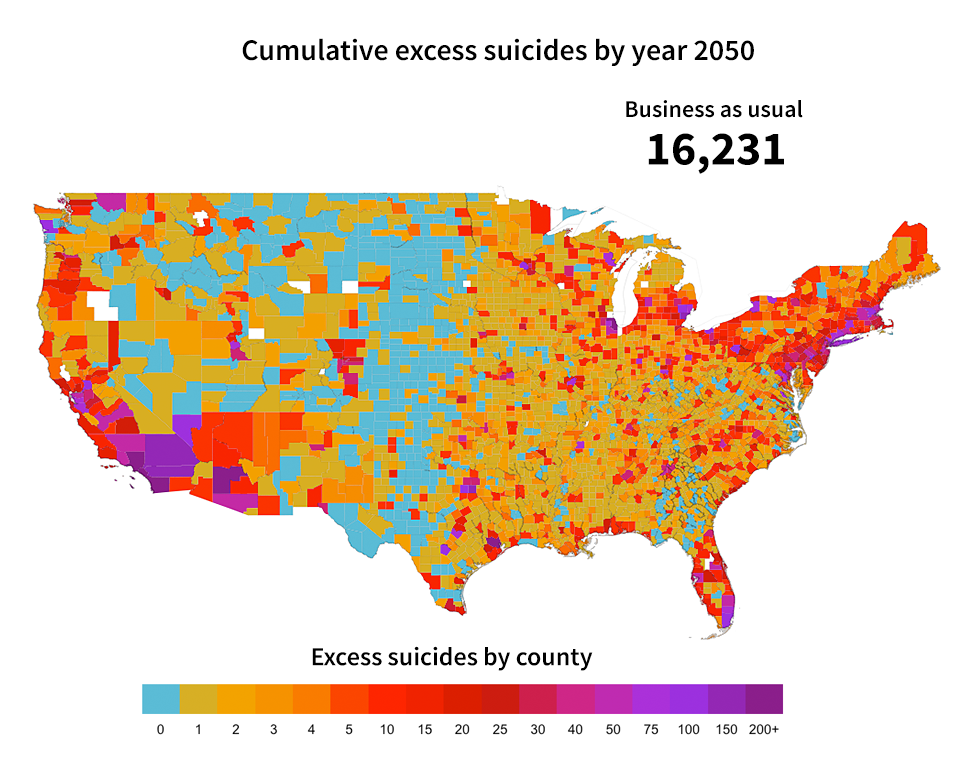Stanford researchers explore the effect of climate change on suicide rates
In warmer temperatures suicide rates increase, leading to concerns about an uptick in suicides as the globe continues to warm. But researchers offer some hope if greenhouse gases get under control.
As global temperatures rise, climate change’s impacts on mental health are becoming increasingly evident. Recent research has linked elevated temperatures to an increase in violence, stress and decreased cognitive function leading to impacts such as reduced test scores, lowered worker productivity and impaired decision-making.
Adding to the concern, a Stanford study led by economist Marshall Burke also finds a link between increased temperatures and suicide rates. The research, published in Nature Climate Change, concluded that up to 21,000 additional suicides will occur by 2050 within the United States and Mexico if unmitigated climate change continues to warm the Earth at the current projected rates.
Suicide is one of the top 10 causes of death in the United States. Unlike other leading causes – which include heart disease, cancer, homicide and unintentional injury – suicide rates have increased rather than fallen over time. And, while there has been a noticeable trend of rising suicide rates in warmer months, up to this point it has been difficult to attribute these changes to temperature, as other factors like day length and social patterns also vary.
Burke and team overcame these obstacles by assembling and examining decades worth of temperature and suicide data across thousands of U.S. counties and Mexican municipalities. To complement the data, they also scanned over half a billion Twitter updates or tweets and looked for language signaling a negative state of mind.
They found that hotter than average temperatures increase both suicide rates and the use of depressive language on Twitter. They also concluded that socioeconomic status had little to no impact, meaning wealth does not help insulate populations from suicide risk.
“One claim you often hear is that it’s the socioeconomically disadvantaged that are going to be affected by climate change. Our results suggest that at least in the case of mental health, impacts are going to cut across the income distribution and could affect any of us,” Burke said.
He and his team then used global climate model projections to predict how future temperatures could affect suicide rates. They found climate change could increase suicide rates by 1.4 percent in the United States and 2.3 percent in Mexico by 2050.
Given this increasing overall health burden, the researchers assert even small changes in suicide rates due to climate change could result in large human costs. Also, if similar relationships hold true in other countries, where suicide rates are sometimes even higher than in the U.S. and Mexico, changes in the associated global health burden may be much larger.
“Clearly, climate is not the only factor affecting mental health, and many approaches to addressing the growing mental health challenge will have nothing to do with climate,” Burke said. “But we find clear evidence that a warming climate is going to exacerbate the burden of poor mental health and ignoring this evidence is going to cause unnecessary harm and anguish for a lot of individuals and families inside our country and out.”


